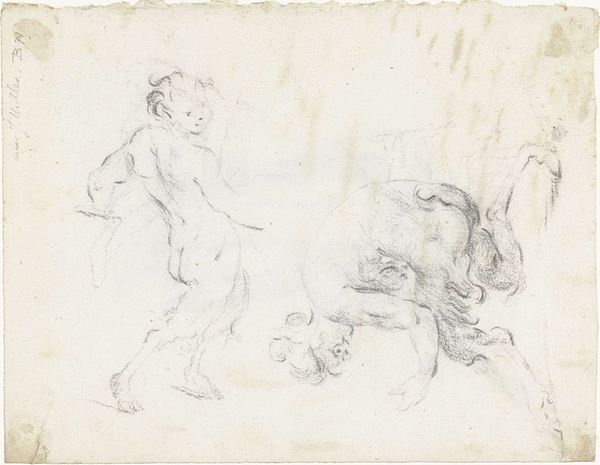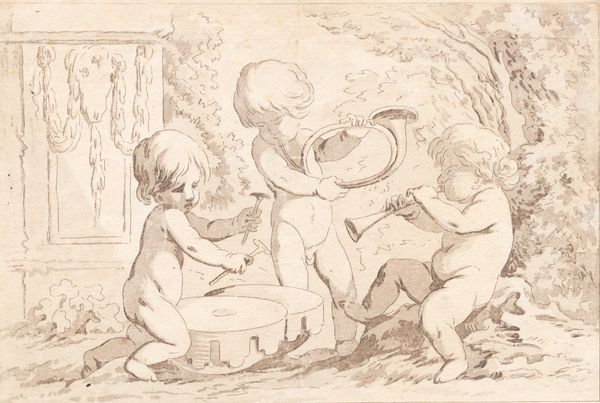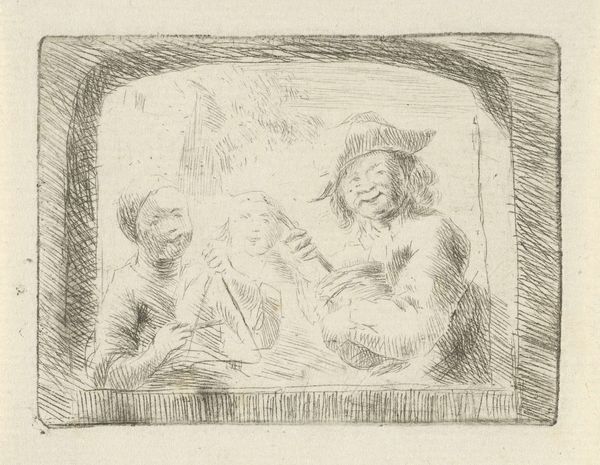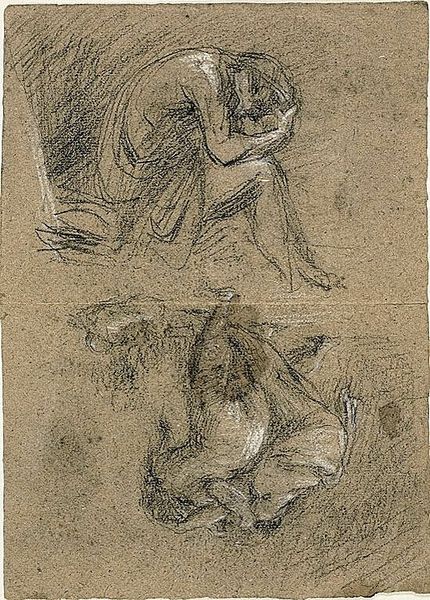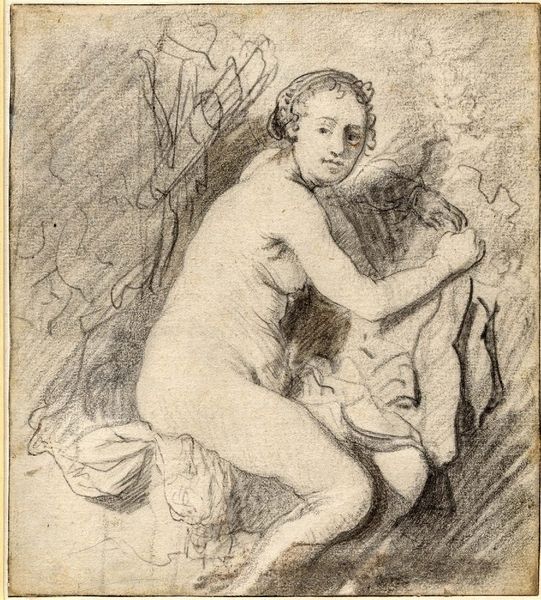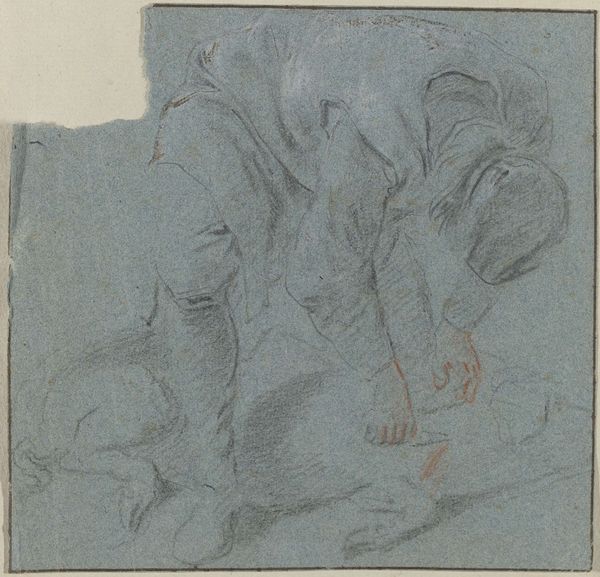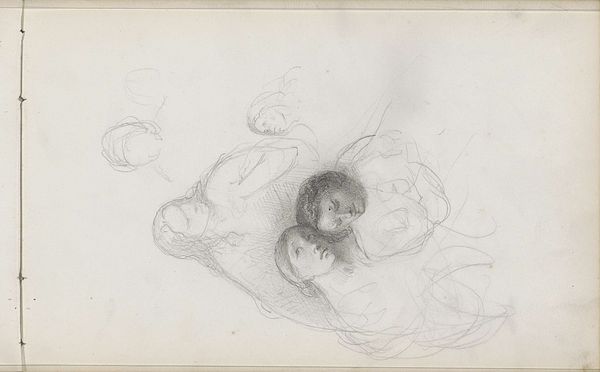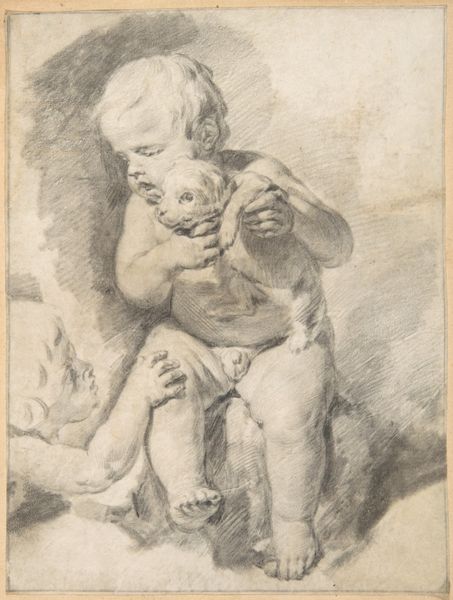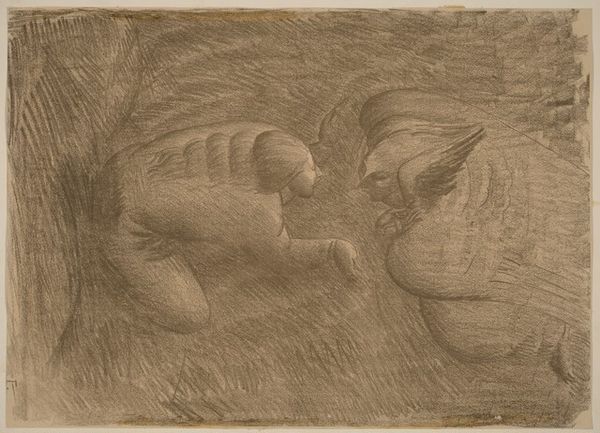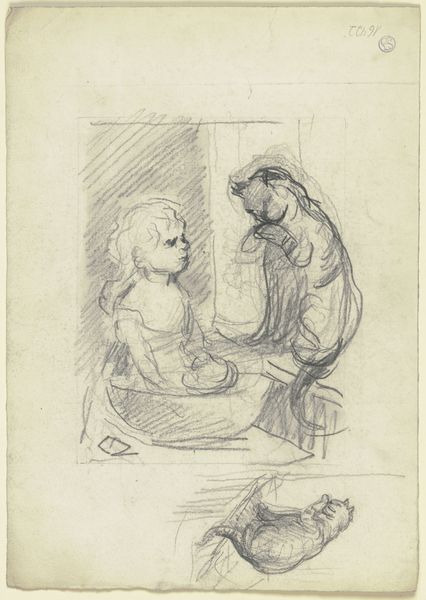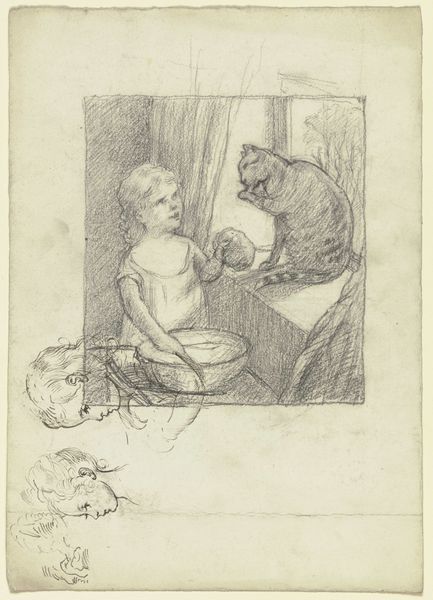
drawing, charcoal
#
drawing
#
allegory
#
charcoal drawing
#
figuration
#
romanticism
#
charcoal
#
nude
Copyright: Public Domain: Artvee
Curator: Here we have Pierre-Paul Prud'hon’s “Amours couchés,” or “Reclining Cupids,” created around 1800. It's a delicate charcoal drawing on blue paper. My first impression is one of quiet intimacy. What do you think? Editor: Definitely a hushed, dreamlike quality. The composition, with its soft charcoal lines and muted tones, evokes a sense of innocence and vulnerability. You immediately sense the delicate balance between rest and activity. Curator: Prud'hon was deeply influenced by the Neoclassical style, but his work, especially pieces like this, lean into Romanticism, focusing on emotion and sentiment. He worked during a period of great social upheaval in France. What statement might this make in that environment? Editor: Absolutely. While his contemporaries grappled with revolution, Prud'hon offers a retreat, focusing on themes of love and tranquility. But to your question, the vulnerable cupids can also symbolize the fragility of peace and happiness in such turbulent times. Maybe even a subtle comment on the impact of societal upheaval on the innocent. Curator: I see what you mean. And there's a clear precedent of this during the reign of terror where artists used their artistic abilities to subvert social norms in art as political resistance. This is much more aligned with Romantic aesthetics and its ability to focus on intimate individual emotion. Editor: And we shouldn't overlook the mythological and allegorical weight here. Cupid, or Eros, representing love and desire, placed in such a passive, almost melancholic state, prompts questions about the nature of love itself. Is it always active and passionate, or does it require moments of quiet reflection and repose? Also consider Prud'hon’s exploration of male nudes, where he invites complex analyses. Curator: A thoughtful perspective. What also strikes me is the draftsmanship here. The technique almost melts the figures together so love and sleep combine. I'd be remiss to consider this, but did Prud'hon create any preparatory work? It gives me the same sense that you describe earlier of delicacy and vulnerability. Editor: It’s all intentional, blurring lines and encouraging us to explore nuances of feeling and meaning within those liminal spaces, the space between awake and sleep. It invites us to consider love in its less overt forms, in the simple quiet comfort it provides. Curator: Indeed. Prud'hon’s subtle strokes created a realm where dreams intersect with reality. A powerful meditation on love's softer facets. Editor: Exactly. The piece invites reflection and challenges prevailing views on love, power, and innocence.
Comments
No comments
Be the first to comment and join the conversation on the ultimate creative platform.

